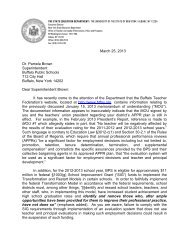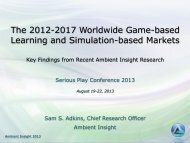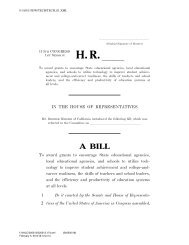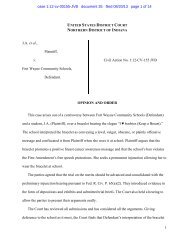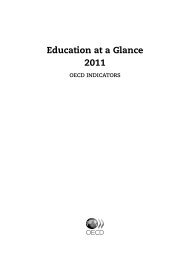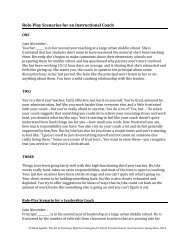Table 1BAssessment Inventory, Midwestern School DistrictMinutes Per Test, Number <strong>of</strong> Annual Administrations and Total Annual <strong>Testing</strong> MinutesLocal Assessments Grade Minutes Annual MinutesKindergarten Test K Developmental indicators 30 3x 90DIBELS K-3 Reading diagnostic 10 3x 304-5 10 1x 10SRI (Scholastic) 6-9 Reading 30 3x 90TerraNova K-1 Reading, math 120 1x 1202 130 1x 130Curriculum-Based Assessments (CBA) 2-3 Math 50 3x 1506-12 Math 50 2x 100Reading 75 2x 150Science 110 2x 220Social studies 110 3x 330PSAT 10,11 Preliminary SAT 135 1x 135NOCTI 12 Career/technical EOC 300 1x 300GRADE (Pearson) 3-11 Literacy (federal grant) 90 3x 270Interim/Benchmark TestsCurriculum-Based Assessments (CBA) 3-5 Math 50 4x 200Classroom Diagnostic (CDT) 6-11 Reading 75 5x 375State-Mandated TestsMath, reading, science 270 3x 810Grades 3-8, 11 3-8 Math, reading 395 1x 3954, 8 Science 160 1x 1605, 8 Writing 330 1x 33011 Math, reading, writing,scienceEnd-<strong>of</strong>-Course* 9-12 Math, reading, socialstudies, science*Assumes students take two end-<strong>of</strong>-course assessments per year for four years.990 1x 990120 2x 240that while nearly all respondents believed that thepurpose <strong>of</strong> interim assessments was to guide andimprove instruction, 90 percent <strong>of</strong> the same respondentsbelieved they measure progress toward theend-<strong>of</strong>-year state test, 80 percent believed they werealso diagnostic and 90 percent thought they wereformative (Heppen et al., 2011).Despite the ubiquity <strong>of</strong> interim/benchmark testing,research on these tests has failed to demonstratea positive and statistically significant impact onimproving student achievement on end-<strong>of</strong>-year tests,which is the tests sole purpose. 1 The studies that havefound some positive impacts focused more on datause and accessibility.” 2 It is not clear whether the1. A national study conducted by Mathematica Policy Research (Furgeson et al., 2012) <strong>of</strong> 22 Charter Management Organizations (CMOs) found that “frequent formativestudent assessments” (referring to interim/benchmarking assessments) had no impact on positive achievement impacts among CMOs. In a study <strong>of</strong> Formative Assessments<strong>of</strong> Student Thinking in Reading (FAST-R), teachers in Boston were given test data aligned to the state assessments every three to 12 weeks, and data coaches helpedteachers interpret and use the data. A two-year evaluation <strong>of</strong> 21 elementary schools found small but statistically insignificant effects (Quint et al., 2008). A one-year study<strong>of</strong> benchmark assessments in 22 Massachusetts middle schools also showed no effect (Henderson et al., 2007). May and Robinson (2007) studied a benchmark assessmentprogram used in high schools to prepare students for the Ohio Graduation Tests and found no statistically significant impact from the benchmarking for students takingthe graduation test for the first time.<strong>Testing</strong> <strong>More</strong>, <strong>Teaching</strong> <strong>Less</strong> 11
esults <strong>of</strong> those studies are due to the benchmarkingtests, the practice effects <strong>of</strong> repeated test-taking, orthe improved data literacy <strong>of</strong> teachers. New Leadersfor New Schools (Marshall et al., 2006) identifiedseveral reasons why interim assessments may notproduce significant achievement gains:• Poor alignment with state standards, tests orpacing guides;• Results presented in an overly elaborate, confusingmanner;• Results used only to focus on bubble kids;• Not administered frequently enough to have animpact on instruction;• Scored externally with teachers having no investmentin the results;• Too short and don’t give teachers enough detaileddata; and• <strong>Teachers</strong> think tests will be used to blame them.Both Midwestern School District and EasternSchool District layered on an array <strong>of</strong> interim/benchmarkingtests administered several times a year:Midwestern School District: ACUITY is a statetailoredcommercial benchmarking test administeredthree times annually. The ScantronPerformance Series, given twice annually, is alsoused for benchmarking in grades 7-11. MidwesternDistrict has “mock” end-<strong>of</strong>-course testingtwice a year in high school.Eastern School District: The state-developedClassroom Diagnostic Tool (CDT), administeredthree times annually, is used to predict outcomeson the state-mandated test in grades 6-11and is also used for benchmarking to the stateend-<strong>of</strong>-course tests. For benchmarking purposesin grades 3-5, the district used a modified version<strong>of</strong> the district-developed Curriculum-BasedAssessments, which is administered four times ayear in math and five times a year in reading.Classroom-based assessments. These assessmentsare used during teaching and are embedded ininstruction; they are a tool that helps teachers adjusttheir instruction in the moment to meet the needs<strong>of</strong> students. This isn’t just about giving a quiz at theend <strong>of</strong> class, but it’s also questioning and observingstudents on performance tasks. Results are receivedinstantly, which allows teachers to adjust theirinstruction immediately. <strong>Teachers</strong> also use tests,quizzes and homework to assess student learning.<strong>Teachers</strong> surveyed in Chicago spent 22 minutes aday giving students curriculum subject assessments(tests, quizzes, etc.) and another 32 minutes a dayassessing students’ work during contractual hours(Bruno, Ashby and Manzo, 2012).Embedded and rapid assessments. Embeddedassessments could be thought <strong>of</strong> as the “next generation”formative assessment. Assessments embeddedin instructional materials using emerging technologyand research on learning aims to inform instructionthrough a balance <strong>of</strong> fine-grained classroom diagnostictests, challenging tasks and projects in whichstudents work through individual topics at theirown pace, taking brief tests <strong>of</strong> their mastery alongthe way, with feedback delivered to the student andteacher on individual processes or misconceptionsthat cause the student problems (Gordon Commission,2013). They are now used in some computerbasedmath programs such as Carnegie Learning,Khan Academy and Agile Mind, and in Scholastic’sREAD 180 and Lexia Reading. Both Eastern and Midwesternschool districts already use READ 180, andEastern School District also uses a Carnegie Learningprogram.Randomized and quasi-experimental researchindicate that “rapid formative assessment systems”effectively raise student achievement (Nunneryet al., 2006; Ross et al., 2004; Ysseldyke and Bolt,2007; Ysseldyke and Tardrew, 2007) and are a moreefficient use <strong>of</strong> resources than a range <strong>of</strong> alternativeinterventions such as a longer school day, value-2. A multidistrict, multistate quasi-experimental study <strong>of</strong> the first year <strong>of</strong> a data-driven reform strategy (Carlson, Borman, Robinson, 2011) found a small positive impacton math scores but no statistically significant impact on reading scores. However, subsequent research on all four years <strong>of</strong> the same program (Slavin et al., 2013) revealedthat impacts on elementary reading and math were never statistically significant in any <strong>of</strong> the four years except fourth-year reading. In middle school, significant positiveeffects were limited to the first two years in reading and only the first year in math. In a value-added study <strong>of</strong> four districts (102 principals and 593 teachers), an index <strong>of</strong>teacher general data use had a positive impact on middle-grades math and elementary-grades reading, but no impact on middle school reading or elementary math (Fariaet al., 2012). An index <strong>of</strong> principal general data use had a positive impact on middle-grades math but no impact on middle-grades reading or at the elementary level foreither subject.12 <strong>American</strong> <strong>Federation</strong> <strong>of</strong> <strong>Teachers</strong>



